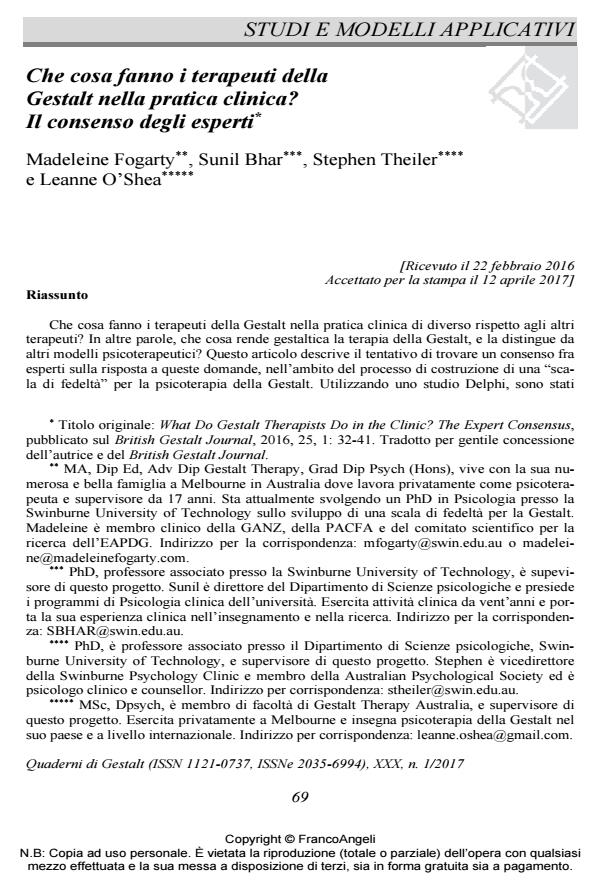Che cosa fanno i terapeuti della Gestalt nella pratica clinica? Il consenso degli esperti
Titolo Rivista QUADERNI DI GESTALT
Autori/Curatori Madeleine Fogarty, Sunil Bhar, Stephen Theiler, Leanne O’Shea
Anno di pubblicazione 2017 Fascicolo 2017/1
Lingua Italiano Numero pagine 22 P. 69-90 Dimensione file 251 KB
DOI 10.3280/GEST2017-001006
Il DOI è il codice a barre della proprietà intellettuale: per saperne di più
clicca qui
Qui sotto puoi vedere in anteprima la prima pagina di questo articolo.
Se questo articolo ti interessa, lo puoi acquistare (e scaricare in formato pdf) seguendo le facili indicazioni per acquistare il download credit. Acquista Download Credits per scaricare questo Articolo in formato PDF

FrancoAngeli è membro della Publishers International Linking Association, Inc (PILA)associazione indipendente e non profit per facilitare (attraverso i servizi tecnologici implementati da CrossRef.org) l’accesso degli studiosi ai contenuti digitali nelle pubblicazioni professionali e scientifiche
Che cosa fanno i terapeuti della Gestalt nella pratica clinica di diverso rispetto agli altri terapeuti? In altre parole, che cosa rende gestaltica la terapia della Gestalt, e la distingue da altri modelli psicoterapeutici? Questo articolo descrive il tentativo di trovare un consenso fra esperti sulla risposta a queste domande, nell’ambito del processo di costruzione di una "scala di fedeltà" per la psicoterapia della Gestalt. Utilizzando uno studio Delphi, sono stati identificati otto concetti chiave che caratterizzano la terapia della Gestalt, e dei comportamenti del terapeuta che riflettono tali concetti.
Parole chiave:Gestalt, scala di fedeltà, studio Delphi, accrescere la consapevolezza, lavoro relazionale, lavoro nel qui e ora, pratica fenomenologica, lavoro con la consapevolezza corporea (embodiment), pratica sensibile al campo, processi di contatto, atteggiamento sperimentale.
Madeleine Fogarty, Sunil Bhar, Stephen Theiler, Leanne O’Shea, Che cosa fanno i terapeuti della Gestalt nella pratica clinica? Il consenso degli esperti in "QUADERNI DI GESTALT" 1/2017, pp 69-90, DOI: 10.3280/GEST2017-001006